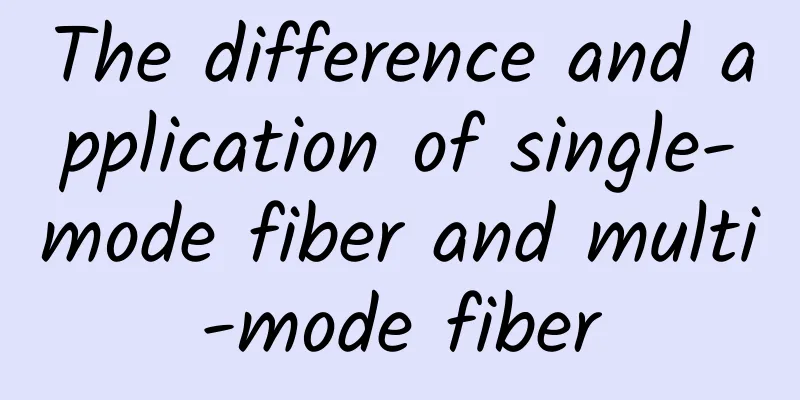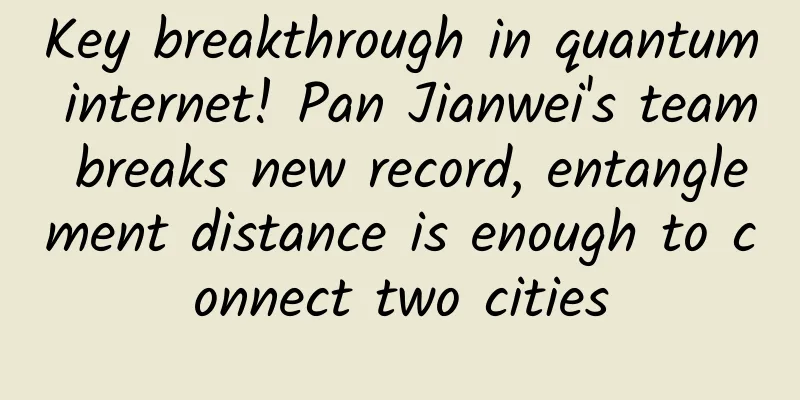The difference and application of single-mode fiber and multi-mode fiber

|
Fiber optics can transmit data faster and over longer distances than other technologies, making them the foundation of contemporary data transmission. As a result, fiber optics are widely used in Internet services, telecommunications, and enterprise data center networks. There are many critical decisions to make during the installation of fiber optic cable, and choosing single-mode or multimode is one of them. This choice will have a significant impact on network bandwidth, distance, and budget. Therefore, it is crucial to fully understand the differences between these two types of fiber optic cables. The main difference between single-mode and multimode fiber optic cables is that in single-mode fiber optic cables, light travels through only one path. Whereas in multimode fiber, multiple light rays travel through the waveguide at the same time. However, the core diameter of single-mode fiber is smaller than that of multimode fiber. Let's understand them better. Single mode fiberIf the core is so small that only light with a 0° incident angle can stably pass through the length of the fiber without much loss, it is called single-mode fiber. In this case, the diameter from the core to the cladding is 9 to 125 microns. Optical fiber consists of three parts: core, cladding, and coating or buffer. Core-type single-mode optical fiber has a tight center and consists of a single fiber bundle. Light from a light source tends to pass through this specific part. Therefore, a sharp, focused beam like a laser is required as a light source for a small diameter core. It is well known that single-mode optical fiber has minimal signal distortion because it transmits only one ray of light. Multimode FiberIn multimode fiber, multiple light rays travel through the fiber at the same time. However, each ray of light is reflected at a specific angle during its transmission. In the case of multimode fiber, the diameter of the fiber from the core to the cladding is 50-62.5 to 125 microns. The diameter of the core is large enough to allow multiple light rays to pass through it and use LEDs as light sources. In the case of multimode fiber, as the number of light reflections generated when light passes through the core increases, it is able to transmit more data in a given time. The difference between single-mode fiber and multi-mode fiberCore diameter Single-mode fiber has a much smaller core diameter than multimode fiber. The former has a core diameter of 9µm, while multimode fiber's core diameter is usually between 50µm and 62.5µm. This gives multimode fiber cables a greater ability to "focus light" and simplify connections. Due to the larger core diameter, it has a greater attenuation than single-mode fiber. Single-mode cables have a very narrow core. Therefore, the light passing through these cables is not reflected as frequently, keeping attenuation to a minimum. Light source and wavelength Low-cost light sources like vertical-cavity surface-emitting lasers (VCSELs) and light-emitting diodes (LEDs), which operate at wavelengths of 850 nm and 1300 nm, are often used in multimode fiber cables due to their large core size. Single-mode fiber, on the other hand, typically uses a laser or laser diode to generate the light injected into the cable. The most commonly used single-mode fiber wavelengths are 1310 nm and 1550 nm. bandwidth The bandwidth of multimode fiber is limited by its light mode. In contrast, single-mode fiber theoretically has unlimited bandwidth because it allows only one light mode to pass through at a time. Therefore, it is widely preferred in today's fast-paced environment. The two fiber types have very different capabilities in terms of bandwidth. Single-mode fiber optic cables utilize bright, strong light sources with low attenuation. In the case of multimode fiber, the brightness is lower and the attenuation is higher. Most users obviously require higher bandwidth and an uninterrupted experience, which gives single-mode fiber the upper hand. Color sheath According to the Telecommunications Industry Association TIA-598-C standard definition of fiber optic cable color coding, single-mode cables for non-military applications are coated with a yellow outer jacket, and multimode optical fibers are coated with an orange or aqua jacket. Transmission distance The electronics and its light output capabilities determine the transmission distance of a fiber optic cable, and single-mode fiber has proven to be superior in this regard and is capable of both short and long-distance transmission. Moreover, its transmission is not affected by resolution quality or single bandwidth. Most of them can be relayed up to 10 kilometers through single-mode fiber optic cables. On the other hand, due to its cable grade, multimode fiber optic cables tend to have a maximum range of between 300 and 550 meters. Since multimode fiber supports multiple optical modes and has a larger core size, its fiber distance is limited by modal dispersion, which is a common phenomenon in multimode step-index fiber. This does not happen with single-mode fiber. cost The expense involved is one of the key factors to consider when making any purchasing decision. Of course, you want to choose the option that will provide the best results at an affordable price. Currently, single-mode fiber has a cost advantage over multimode fiber. Although it has more complex optical processors and more powerful light sources, single-mode fiber cables are less expensive than multimode cables due to their manufacturing efficiency. In fact, on average, single-mode fiber saves 30% over multimode fiber. However, it is also important to consider that most fiber optic systems use transceivers, which are responsible for combining transmitters and receivers into a single fiber optic technology module for receiving and sending on the optical network. Currently, multimode transceivers are two to three times less expensive than single-mode transceivers. SummarizeWhen multiple modes or light paths propagate along a multimode fiber cable, it can provide high bandwidth over a short distance. All light emitted by a pulse propagates at almost the same speed in a single-mode fiber and arrives at about the same time, so there is no modal dispersion effect in multimode fiber. It can support higher bandwidth levels and has less signal loss over longer distances, making it ideal for long-distance signal transmission applications from remote offices to campuses. However, because multimode fiber has multiple light paths, it is ideal for projects that require high bandwidth over a short distance. Therefore, the ideal fiber optic cable for your project should be selected based on your specific needs and budget constraints. |
<<: Fiber Optic Cable Types and Installation Tips
>>: Let's talk about network programming
Recommend
"IPv6+" builds intelligent connections in all scenarios and supports the digital future
On August 28, the 2020 China IPv6 Development For...
Ramnode: Cloud server recharge 50% off, promotional VPS hosting from $12/year, Los Angeles/Seattle, etc.
Ramnode also released a promotion during this yea...
Network Programming - Another Look at TCP's Four Waves
[[270759]] Preface Four waves The four-wave proce...
Ten basic skills for Linux operation and maintenance engineers
I am a Linux operation and maintenance engineer a...
Don’t let digital experience get in the way of your business strategy
Do you remember the last time you expressed your ...
Did you know? Did you know? Telecom networks should focus on multi-layer orchestration
A few years ago, the word “orchestration” was har...
The Internet of Things is not new, but why is it important?
The Internet of Things (IoT) is a term that is be...
Are you ready for 5G? Five new applications you'll see
Earlier this year, an article wrote: 5G will tran...
When purchasing a wireless router, which one is better, “single-band” or “dual-band”?
In this era where we cannot live without the Inte...
Launchvps: $39.4/year KVM-4GB/80GB/3TB/Philadelphia
Launchvps is a foreign VPS service provider estab...
As the competition for 6G gathers momentum, can China continue to lead the world?
Globally, 5G network construction is in full swin...
Justhost newly launched data centers in Hong Kong/Italy, 200Mbps unlimited data starting from $3.7/month
I received the latest email from Justhost, which ...
SASE vs. SD-WAN: Which one do you pick?
SASE (Secure Access Service Edge) and SD-WAN are ...
The inheritance of mobile communications from the 1G era
This article is reprinted from the WeChat public ...
Five-minute technical talk | Understand how computers send and receive information in one article
Part 01 Physical Layer If a computer wants to tra...









